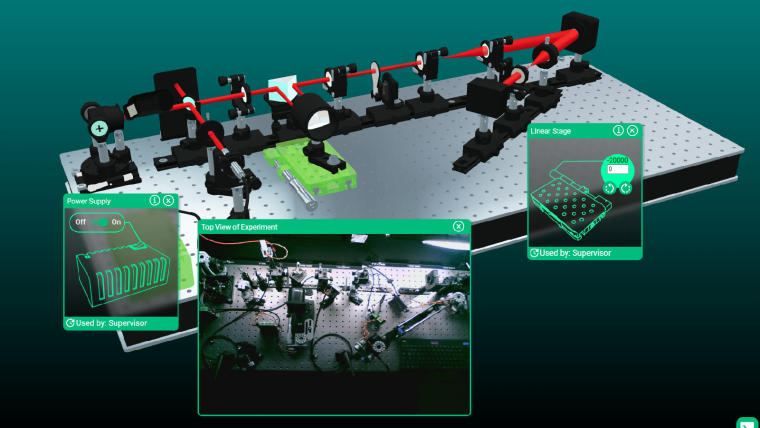
Adaptive optics are widely used for dynamic correction of wavefront distortions in systems like telescopes and microscopes. Moreover, adaptive optical components have become important for high-power lasers and beam and pulse shaping as well as compensation of distortion caused by nonlinear processes. The first part of this exercise is to learn how to characterize a beam by using a Shack-Hartmann Wavefront Sensor (SHWS) and how to express the deviations of an ideal beam in terms of Zernike polynomial. In the second part, a Deformable Mirror (DM) is used to correct for various aberrations in a microscope, thus increasing image quality and resolution. A typical setup consists of a deformable membrane mirror (a) and a Shack-Hartmann-wavefront sensor (b). The microscope unit (c) is vertically mounted.
In this version, the Adaptive Optics experimental setup is operated in one of our labs, but is fully remotely controllable in order to make the full learning experience tangible online. In parallel and to allow full immersion in the digital world, ASP has developed the open-source toolbox XR TwinLab (XRTL) for the research field of photonics. XRTL provides a modular way of building a web-based application and 3D printed attachments to control optical experimental setups with the integration of VR and AR endpoints.
Further content and detailed descriptions are available to enrolled students via the course's page at the Moodle website of the Friedrich Schiller University Jena.